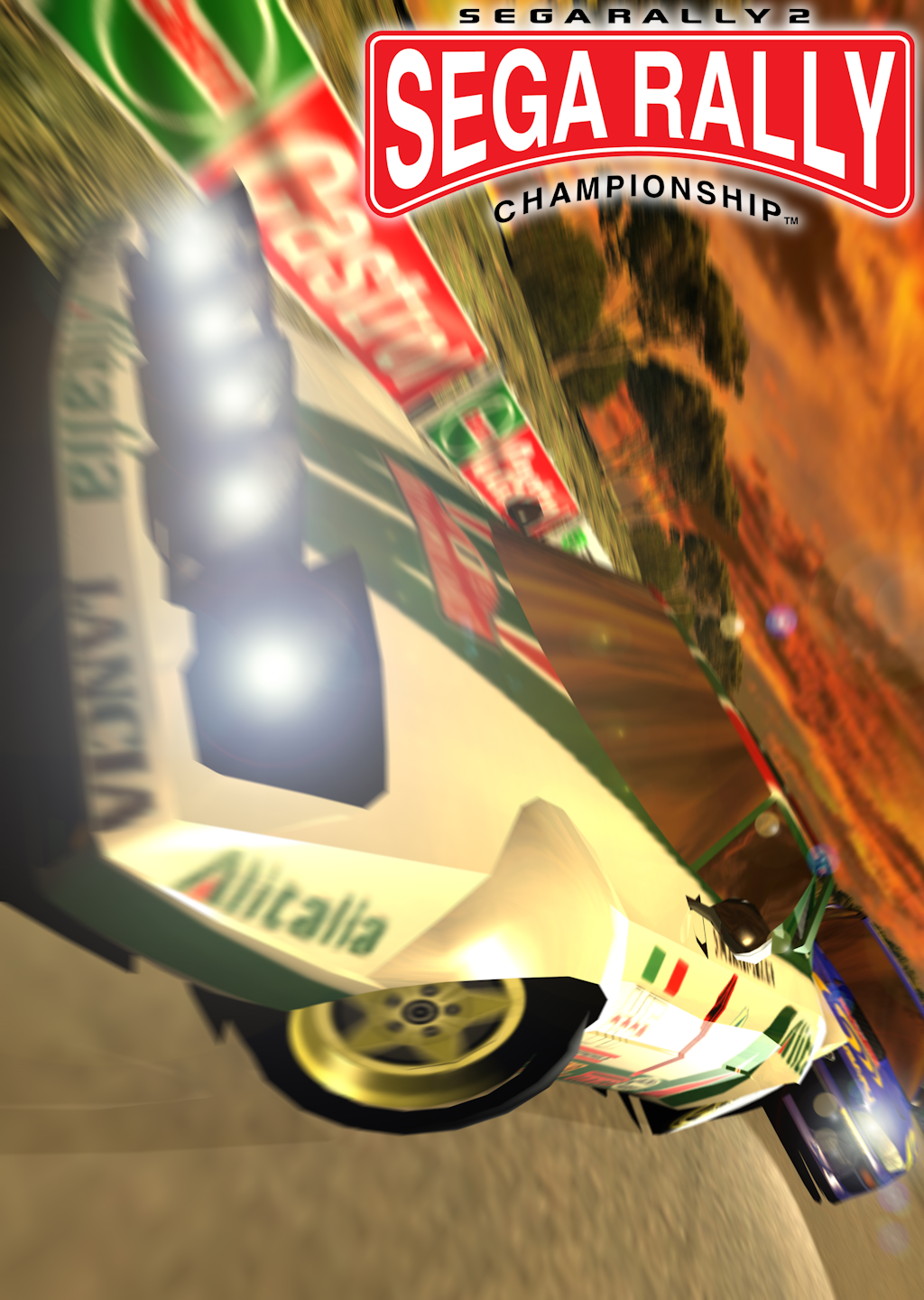This guide works as an overview of the general speedrunning knowledge of the game, as well for advanced techniques that are used in this game to go faster.
[Controls and Input Devices] Depending on the platform, the input device you use in this game makes a difference for how fast you can go. Overall, using a controller with analog inputs both on Steering and Accelerate/Brake helps with smoothing turns and turning more while maintaining momentum respectively, with the exception on Dreamcast where using digital or analog input for steering doesn't make a difference, so in that case it's just a matter of preference. The Arcade version of the game is Steering Wheel only.
[Transmission] In this game you can choose between Automatic and Manual transmission. Manual is to be preferred over Automatic, because the way the game automatically shifts gear based on your speed is not optimal, and will cost you several seconds.
[Perfect Start] To achieve a perfect start, simply start accelerating as soon as the announcer says "GO!". After that, when the speed gauge reaches the number 30, skip 2nd gear and immediately shift to 3rd gear (For PC/DC, just rapidly shift). You can then shift to 4th gear as soon as you go past 190Km/h.
[Terrain Types] In this game, each kind of terrain condition has its properties, which will influence the car's behaviour.
- Tarmac: The standard terrain type, featuring high grip and acceleration rate.
- Gravel: This type of terrain features the same acceleration rate as tarmac, but lower grip, causing the car to slide more easily through corners.
- Grass: This type of terrain features a slightly inferior acceleration rate then tarmac, and a grip lower than gravel, causing more frequent lockups. It is usually present on the borders of the track, with the exception of some grass patches on the inside or outside of corners. With the exceptions of big corner cutting, it is generally better to avoid grass to keep more speed and grip.
- Water: This type of terrain features very low acceleration rate and very low grip. Avoid this kind of terrain at all costs where possible.
- Snow: This type of terrain features lower grip and acceleration rate than gravel. It also influences handling in a way that lockups during a turn are more frequent if you don't fully steer in one of the directions. Steering also takes more time than usual.
- Mud: This type of terrain features very similiar characteristic to gravel.
- Rain: The track's conditions are generally harsher when it rains, making it easier to slide during a turn. This is only present during 10 Year Championship and on a few Time Attack tracks.
[Sliding and Full Steering] In this game, sliding helps taking turns more easily, but it's generally slower to do so. The best way to approach a turn is to keep as much grip as possible to complete it, which will by consequence preserve momentum. The only exception is with tighter turns where it's better to full steer for the entire duration of the turn, and then snap the car back to neutral position on the turn exit.
[Accelerator Partialization] To take turns tighter while still preserving speed and thus momentum, it is important to parzialize the accelerator where possible. More than often it's just necessary to let go of the accelerator, but in specific situations it's better to partialize it. Accelerating on and off also works, as long as the Accelerator input is analog.
[Braking, Handbraking and Hairpins] Braking is something that's not done very often in this game, and mostly works in hairpins. Generally, braking helps a lot with snap turning in a specific direction, but holding brake for a long period of time slows you down too much, making you lose time. This is where the handbrake comes into play. Handbraking generally works for tight hairpins, for maintaining more speed during a corner exit while still turning a bit more than just braking. The best way to combine both kind of brakes during an hairpin is the following:
- On the corner entry, let go of the accelerator, steer and brake at the same time into the direction of the corner.
- Just a little after braking, use the handbrake to take the turn even tighter.
- Once you reach the turn's apex, let go of brake but keep handbraking.
- On the turn exit, let go of the handbrake and fully accelerate.
[Wall-turning and Purposeful Wallhitting] In specific cases, it's helpful to slightly hit the apex or the outside of a turn to artificially slow down the car and keep more speed through the corner. Riviera is a good example with its two hairpins, where it could be saved a good amount of time by slightly clipping through the apex.
[Air Time] Although there aren't many situations where it happens, or where it could be avoided, during air time your car loses speed. It's important to reduce it to the minimum where possible, by either taking a slightly different line or landing on a different spot, while still maintaining the optimal trajectory.




